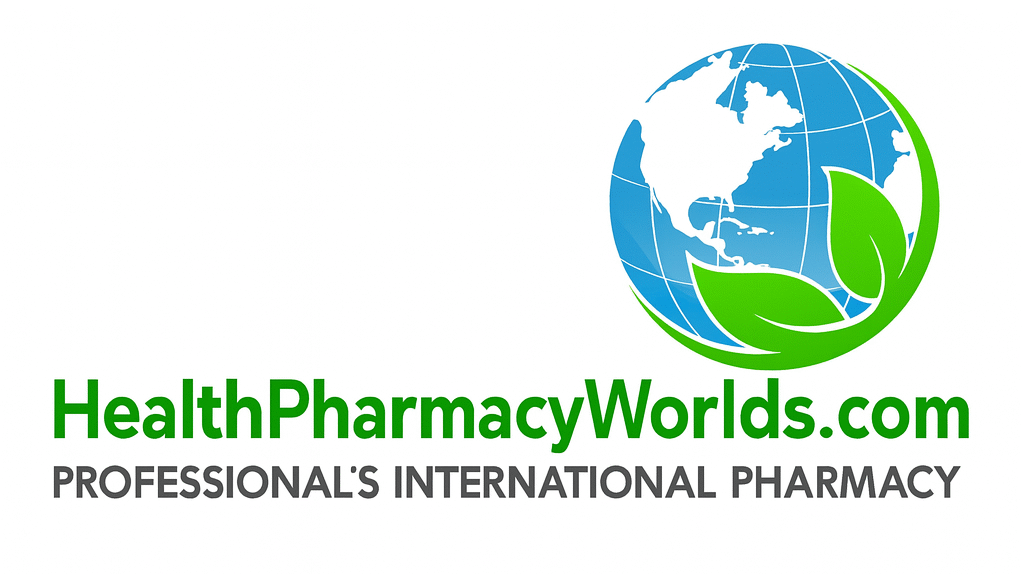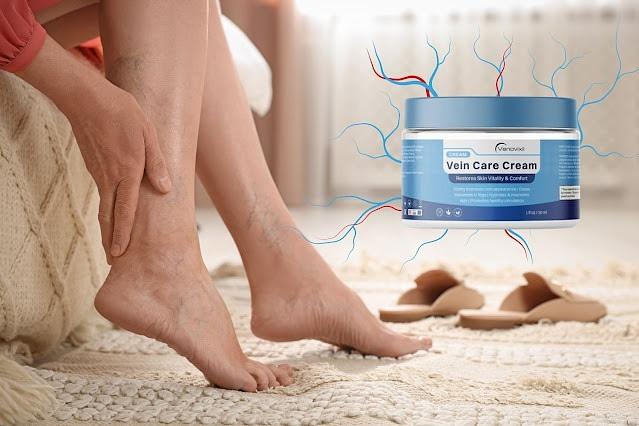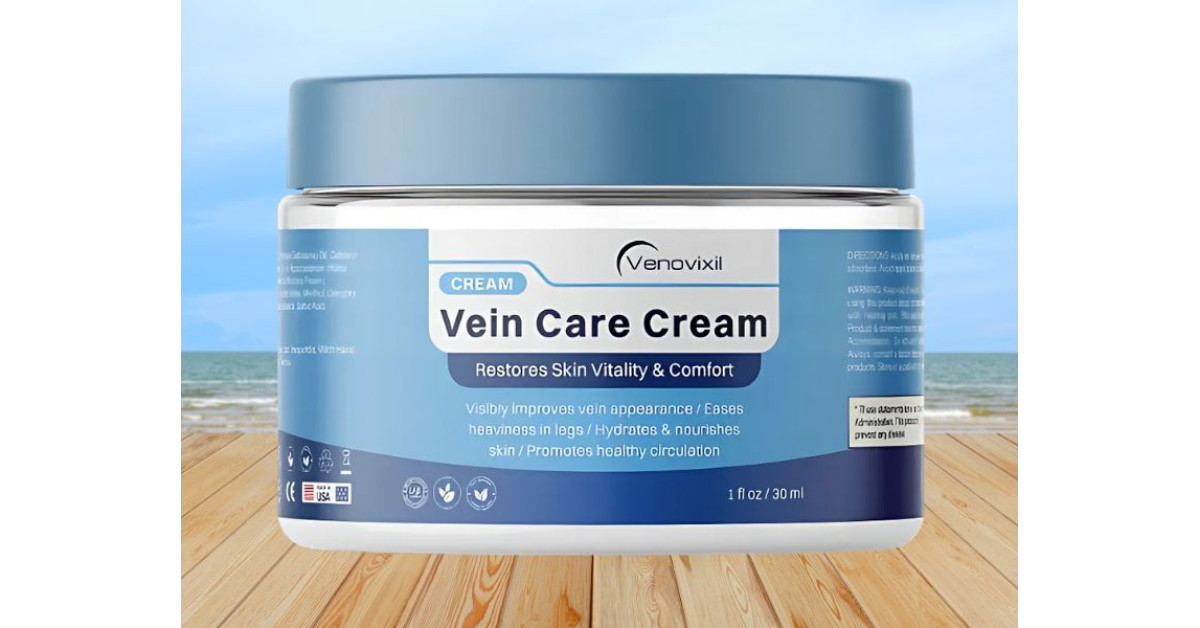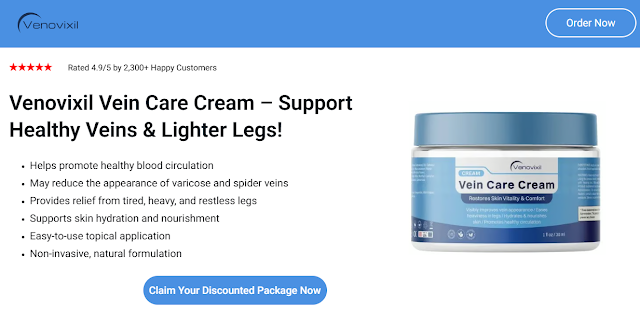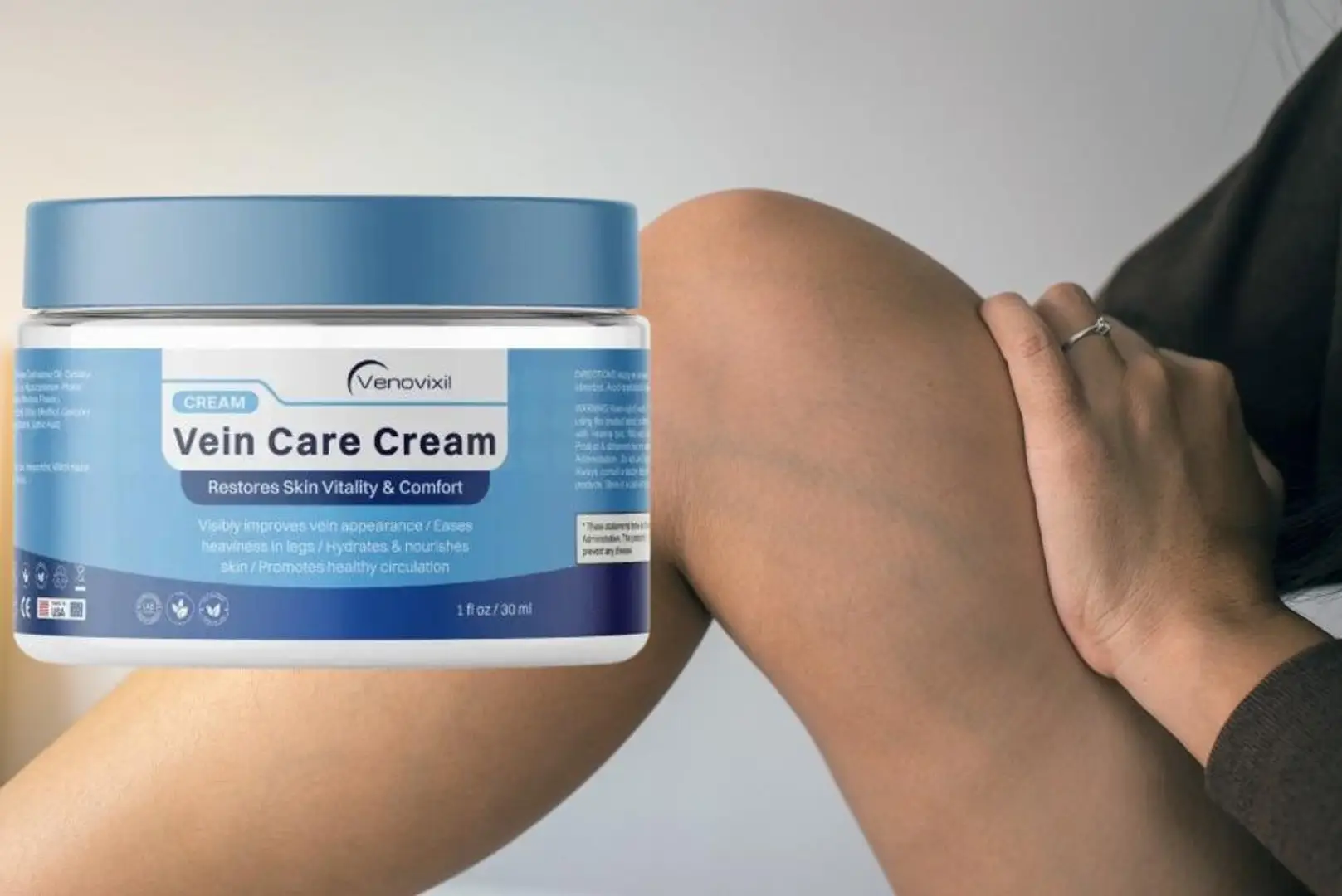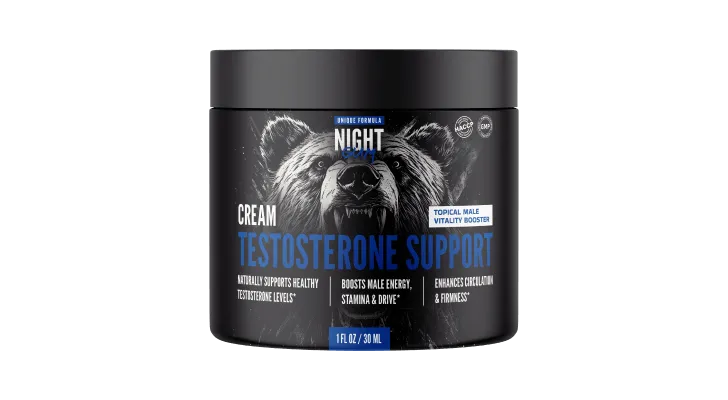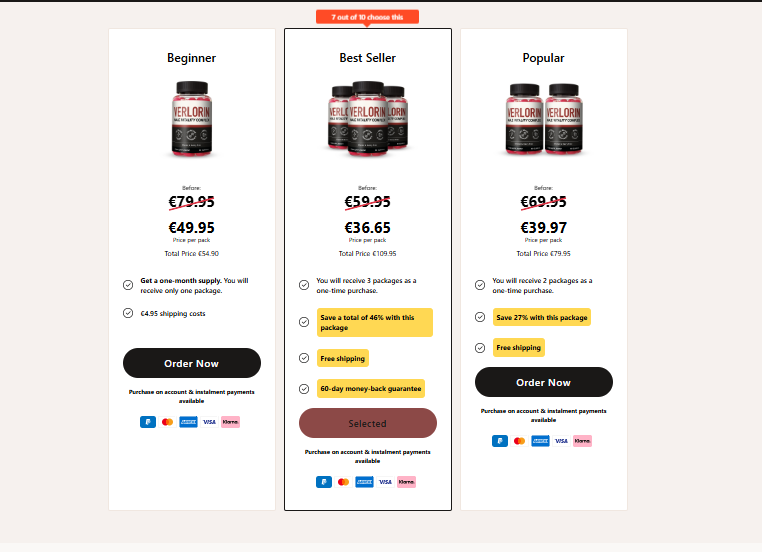Introduction
Varicose and spider veins affect millions of people worldwide, presenting as visible, sometimes painful, bulging veins — most commonly on the legs. For those seeking a non‑invasive approach to manage symptoms and improve skin appearance, topical creams are a popular first step. Venovixil Vein Care Cream is one such product promoted for supporting vein health, reducing the appearance of visible veins, and soothing discomfort.
This article is a thorough, balanced look at Venovixil Vein Care Cream in the UK market: what it contains, how it is supposed to work, realistic expectations, safety considerations, usage guidance, and how it compares to other options. If you’re considering Venovixil — whether for cosmetic reasons or to ease mild symptoms — read this guide before you buy. Always consult a medical professional for moderate or severe vein disease.
✅ Click Here to Order Venovixil Vein Care Cream UK at the Best Price Today!
What is Venovixil Vein Care Cream?
Venovixil Vein Care Cream is a topical formulation marketed to support circulation in the superficial veins of the legs, reduce swelling and inflammation, and improve the cosmetic appearance of spider and varicose veins. The product typically comes in a tube or pump bottle intended for daily application.
Manufacturers of topical vein-care creams generally claim benefits such as: reducing visibility of spider veins, easing aching or heavy sensations in the legs, calming skin irritation, and supporting microcirculation. These claims vary by brand and should be read with healthy scepticism unless backed by peer‑reviewed clinical data.
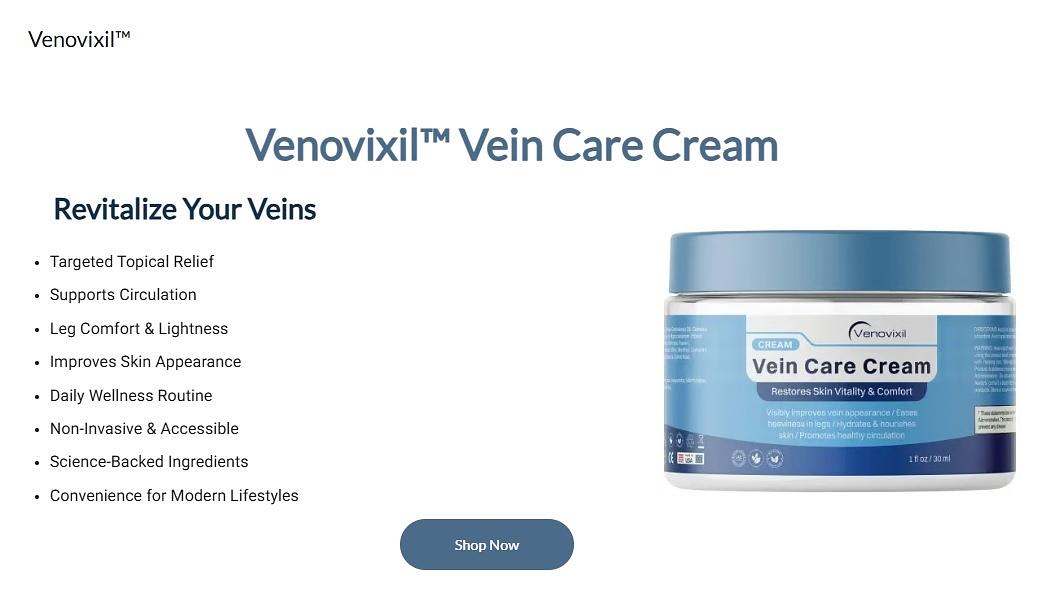
Key ingredients and what they do
Topical vein-care products often combine botanical extracts, bioflavonoids, and anti‑inflammatory agents. The exact ingredient list for Venovixil may vary by formulation, but the following ingredients are commonly found in similar creams and are worth understanding:
- Horse Chestnut Extract (Aescin) — Aescin has been studied for its ability to reduce leg swelling and improve venous tone. Oral extracts have evidence for chronic venous insufficiency; topical benefits are less well‑documented but are plausible due to localized anti‑inflammatory effects.
- Butcher’s Broom (Ruscus aculeatus) — Traditionally used to support circulation, butcher’s broom contains ruscogenins which may reduce capillary permeability and inflammation. Some studies support its use for venous symptoms.
- Diosmin / Hesperidin (Citrus Bioflavonoids) — These flavonoids are found in many vein-care products and have been studied in combination for improving vein function and reducing symptoms like heaviness and swelling, especially when taken orally. Topical action may be milder but could help locally.
- Centella asiatica (Gotu Kola) — Often included for its potential role in supporting collagen production and strengthening capillary walls.
- Arnica montana — Used for bruise reduction and anti‑inflammatory effects; it may help with the appearance of bruising and minor trauma to capillaries.
- Menthol / Cooling Agents — Provide a temporary cooling effect that reduces the sensation of heaviness and tired legs.
- Moisturizers and Emollients (e.g. glycerin, shea butter) — Improve skin quality and texture, which can make veins less noticeable.
- Vitamins (e.g. Vitamin K) — Vitamin K is sometimes marketed for helping to reduce bruising and visible veins; topical evidence is limited but it may aid in skin recovery after minor capillary damage.
Important note: The presence of these ingredients does not guarantee effectiveness. While some components (like diosmin/hesperidin and horse chestnut) have clinical support, most topical preparations lack the rigorous, large‑scale randomized trials required to definitively prove cosmetic or therapeutic claims.
💜 Say Goodbye to Varicose Veins – Click Here to Order Venovixil UK Now!
How Venovixil is supposed to work
The proposed mechanism of a topical vein care cream like Venovixil generally involves several modest, local effects:
- Reducing inflammation and capillary permeability. Botanical extracts with anti‑inflammatory properties may reduce swelling and fluid leakage from capillaries, improving comfort and decreasing the redness seen around spider veins.
- Improving venous tone. Certain bioflavonoids are believed to strengthen small veins and reduce pooling, which helps diminishes the feeling of heavy or tired legs.
- Cosmetic skin improvement. Moisturizers and skin‑brightening compounds smooth the skin and improve its tone, making underlying veins less conspicuous.
- Symptom relief through cooling and massage. Applying cream with a gentle massage improves local circulation and the inclusion of menthol may give immediate symptomatic cooling.
Keep in mind these mechanisms are supportive rather than curative: topical creams cannot reverse advanced structural vein damage (e.g. large varicose veins with valve failure). For those conditions, medical procedures (sclerotherapy, laser, ablation, or surgery) are frequently necessary.
What realistic results can you expect?
If you use Venovixil or a similar cream, realistic outcomes include:
- Reduced leg discomfort, aching, or a feeling of heaviness — particularly after prolonged standing.
- Reduced mild swelling (edema) in the lower legs if the product includes anti‑inflammatory compounds and is combined with leg elevation/compression.
- Slight improvement in the redness and visibility of small spider veins over weeks of consistent use, primarily due to improved skin tone and temporary reduction in inflammatory signs.
What topical creams generally cannot achieve:
- Eliminate large varicose veins or significantly regress bulging veins caused by valve failure.
- Replace medically indicated procedures when venous disease is moderate or severe.
For cosmetic improvement of small spider veins and symptomatic relief in early venous disease, topical creams can be a useful adjunct alongside lifestyle measures.
🌿 Natural Vein Support – Click Here to Order Venovixil Cream UK Online
Who might benefit most
Venovixil may be most helpful for people who:
- Have mild spider veins or early-stage varicose veins primarily concerned with appearance.
- Experience mild discomfort, aching, or fatigued legs after standing or long days.
- Prefer non‑invasive, topical approaches before considering medical procedures.
- Want to improve skin hydration and texture on the lower legs.
People with advanced venous disease (persistent swelling, skin discoloration/ulceration, significant bulging veins) should consult a vascular specialist rather than relying on topical creams alone.
How to use Venovixil safely and effectively
Follow label instructions, but common best practices for topical vein creams include:
- Apply to clean, dry skin. Use after showering or bathing when the skin is clean to improve absorption.
- Massage gently. Apply cream using upward motions from ankle toward the knee to encourage venous return — avoid firm pressure over varicose veins.
- Use consistently. Benefits usually require daily use for several weeks. Document progress with photos if you’re monitoring cosmetic changes.
- Combine with lifestyle measures. Elevating legs for short periods, wearing graduated compression stockings if advised, regular exercise, and weight management amplify results.
- Patch test first. If you have sensitive skin, test a small area for 24–48 hours to check for irritation or allergic reaction.
Safety, side effects and precautions
Topical creams are generally well tolerated, but watch for:
- Skin irritation or contact dermatitis. Discontinue use if you develop redness, itching, blistering, or a spreading rash.
- Allergic reactions. Botanical ingredients can cause sensitivities in some people.
- Avoid open wounds. Do not apply to broken skin, severe ulcers, or infected areas. Seek medical care for those conditions.
- Drug interactions. Topical creams rarely interact with oral medications, but if you’re using prescription topical agents or have topical steroid use, consult your GP.
If you experience worsening symptoms — increased swelling, persistent pain, skin discoloration, or ulceration — seek medical attention promptly, as these may indicate progressive venous disease.
Comparing Venovixil with other options
When considering Venovixil, weigh it against alternatives:
- Other topical creams and gels. Many brands offer similar ingredient profiles. Compare ingredient concentrations and price, and read unbiased reviews.
- Oral supplements (diosmin, hesperidin, horse chestnut). Some clinical evidence favours oral bioflavonoids for symptomatic chronic venous insufficiency. Discuss with a clinician before starting supplements.
- Compression stockings. For many people with venous symptoms, graduated compression (15–30 mmHg or 20–30 mmHg depending on severity) is the most effective conservative therapy.
- Procedural treatments. For structural varicose veins, procedures such as sclerotherapy, endovenous laser ablation, or surgery may provide definitive improvement. These are appropriate when sores, bleeding, or significant symptoms are present.
Topical products are best considered part of a combined approach rather than sole therapy for moderate-to-severe venous conditions.
Buying Venovixil in the UK — what to look for
If you decide to purchase Venovixil in the UK, consider these practical tips:
- Source and authenticity. Buy from reputable pharmacies, official brand websites, or well-known retailers to avoid counterfeit products.
- Ingredients list and concentrations. Compare ingredient lists across products. Higher concentrations of active extracts may be more effective — though higher does not always mean better if it increases irritation risk.
- Customer reviews and evidence. Look for independent reviews and any available clinical data or manufacturer-sponsored studies. Be cautious of overly positive reviews with similar wording (possible fake reviews).
- Return policy. Prefer retailers with clear return/refund policies in case of adverse reaction or dissatisfaction.
Frequently asked questions (FAQ)
Q: Can Venovixil remove varicose veins? A: No topical cream can reliably remove large varicose veins caused by underlying valve failure. Topical creams may improve symptoms and the appearance of small spider veins, but structural problems often require medical procedures.
Q: How long until I see results? A: Mild symptomatic relief such as reduced aching or cooling may be noticed within days. Cosmetic improvements in spider veins typically take several weeks of consistent application.
